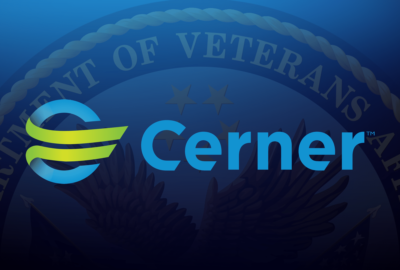

The Pentagon says it's seen progress since the department's independent testing office found the military's electronic health record system is not "operationally...
The Pentagon said it’s made progress since the department’s independent Director of Operational Test and Evaluation (DOT&E) declared the $4.3 billion electronic health record system is “neither operationally effective nor operationally suitable” for any further deployments across DoD’s global health care network.
And now that the Veterans Affairs Department finalized its own contract with Cerner Corporation for a $10 billion electronic health record that’s interoperable with the military’s system, all eyes are on the Defense Department.
After that first round of testing, the Pentagon is learning that change management and governance are the biggest challenges plaguing the early stages of the MHS Genesis roll-out.
“[It] has made us look very hard at all of our workflows and standardize them,” Col. John Scott, data manager for the Defense Health Agency, said earlier this month at a health IT forum sponsored by Government CIO. “We’re finding our first challenges in getting people to accept that we have a COTS product in the Pacific Northwest.”
Striking the right balance between DoD project managers in Washington who want to standardize MHS implementation and the innovators and providers at the four sites the Pentagon has deployed the new system to so far, has been a tough act to reconcile, Scott said.
“A huge challenge we’ve had in the DoD is figuring out how to draw the lines so that our innovators can color within those lines and make very nice pictures,” he said.
Stacy Cummings, program officer for defense health care management systems, said she’s noticed a similar tension as the Pentagon works through the backlog of help desk tickets the department received from new users to the MHS system.
DoD has closed or put aside 88 percent of the roughly 7,000 help desk tickets the department received when it first deployed the new health record at four initial military treatment facilities in the Pacific Northwest.
It now takes the department 12 days to respond to a help desk complaint, compared to the 40 days it took the MHS team last November, Cummings said.
Twelve days isn’t perfect, Cummings acknowledged, but the MHS team is careful not to resolve help tickets too quickly. Many users who submit a ticket often have valuable suggestions or ideas to improve the system, and Cummings said she wants to leave room for innovative users to continue to offer their recommendations.
“Our goal is to drive it down, but I don’t want anyone to think we’re trying to drive out that feedback,” she said. “We want to drive it down as much is practical.”
Training will eventually help DoD make decisions about a specific work order more quickly, Cummings said.
“Until we get that cadre of trained functional providers, then we’re having to take our time and make sure that we’re making the right decisions,” she said.
Since the Pentagon began its stabilization and adoption plan in January, it’s learned some key lessons about how the department trains MHS Genesis users.
“Our training strategy was too focused on technology and not enough focused on the adoption of workflows,” Cummings said. “That was key. You saw it in test report. We saw it, and it’s something that we tackled when we went to the stabilization and adoption plan.”
In addition, Cummings said the Pentagon didn’t leave itself enough time to stabilize each IOC site’s infrastructure, networks and connectivity.
“That was a mistake,” she said. “We’re giving ourselves a little extra time before our first deployment in 2019 to make sure that we get the infrastructure right. We are actually looking for about six months of stability with the network prior to deploying the electronic health record.”
Cummings said she’s seen noticeable progress since January.
Providers at the Pentagon’s four initial operating capability sites have documented and managed 120,000 patient visits using MHS Genesis between January and March of this year. That’s a 20 percent increase since November 2017.
In addition, nurses spent 25 percent less time in the EHR during the first three months of 2018 than they did when DoD’s testing office reviewed the initial MHS deployments in November, Cummings said.
“There are challenges we still need to overcome,” she said. “There are some things that our users and the services, the surgeons general have asked us to focus on throughout the rest of this year before we begin deploying to the next sites. But they’re all manageable.”
Federal IT experts have said VA will likely face some of these same challenges as it begins EHR modernization.
Meanwhile, some members of Congress and experts in the federal IT community have had their concerns with the VA project before it began.
Eleven House and Senate Democrats, including Sens. Richard Blumenthal (D-Conn.), Kirsten Gillibrand (D-N.Y.) and Chris Van Hollen (D-Md.), House Veterans Affairs Committee Ranking Member Tim Walz (D-Minn.) and several Democratic committee members, detailed their concerns about the EHR project in a recent letter to Deputy VA Secretary Tom Bowman.
Their letter is dated May 15, before VA announced it had signed its contract with Cerner for a commercial, off-the-shelf health record. But the members’ concerns transcend VA’s decision to simply finalize the contract.
“We are deeply concerned by the malign neglect within the Department of Veterans Affairs’ efforts to achieve electronic health record modernization,” members wrote. “This is evident through the failure to obtain qualified leadership for the Office of Information [and] Technology, reports of political interference hindering EHR implementation, as well as the rampant vacancies for positions that ensure proper oversight of a new EHR system.”
Members are concerned that widespread vacancies within the department may have a detrimental impact on EHR modernization. According to the members’ letter, VA’s IT office has at least 553 vacancies.
“In the last four months alone, nearly 40 senior staffers have resigned, effectively stalling operations in essential areas such as information technology,” the members said. “As such, we urge you to take immediate action to implement a specific initiative to rapidly hire the expertise necessary to address the VA’s pervasive vacancies.”
Copyright © 2025 Federal News Network. All rights reserved. This website is not intended for users located within the European Economic Area.
Nicole Ogrysko is a reporter for Federal News Network focusing on the federal workforce and federal pay and benefits.
Follow @nogryskoWFED



